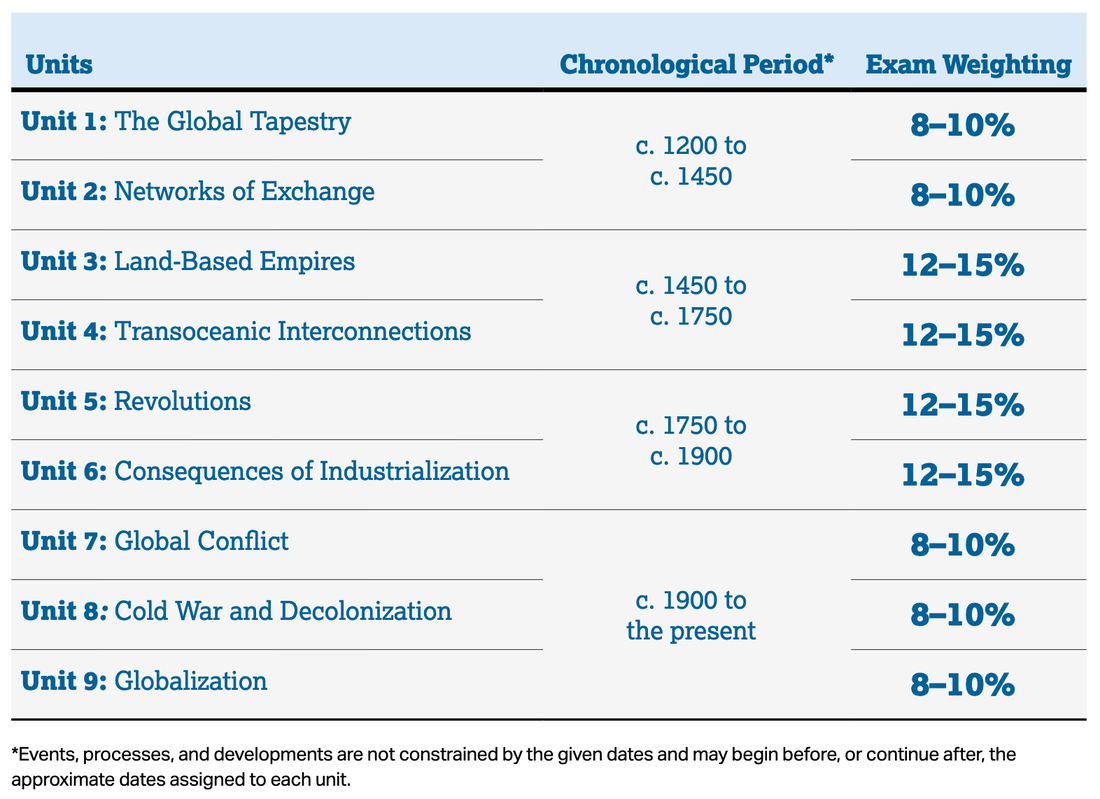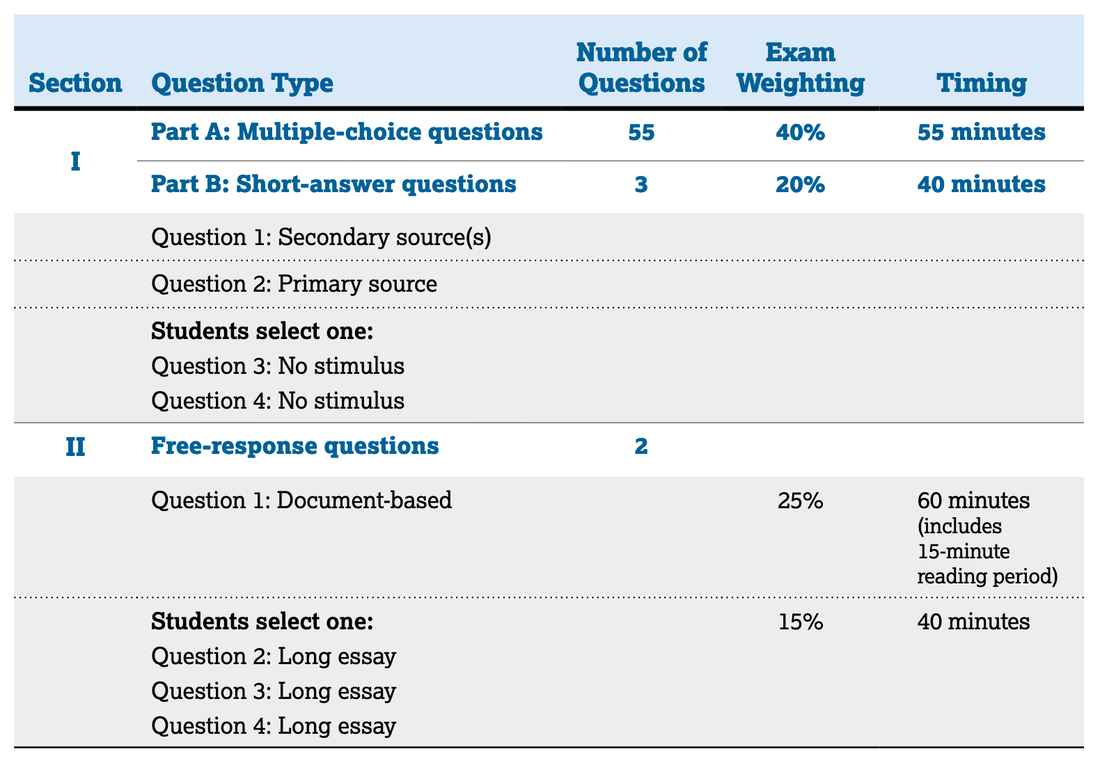Course Breakdown
World Regions to Know
Exam Format
Section 1:
The first part of Section I of the AP World History Exam includes 55 multiple-choice questions typically appearing in sets of three to four questions, each with one or more stimuli, including primary texts, secondary texts, images (artwork, photos, posters, cartoons, etc.), charts or other quantitative data, and maps.
The second part of Section I of the AP Exam also includes three required short-answer questions. Short-answer question 1 is required and includes a secondary source stimulus. The topic of the question will include historical developments or processes between the years 1200 and 2001.Short-answer question 2 is required and includes a primary source stimulus. The topic of the question will include historical developments or processes between the years 1200 and 2001.Students may select short-answer questions 3 or 4, neither of which includes a stimulus. Short-answer question 3 will focus on historical developments or processes between the years 1200 and 1750. Short-answer question 4 will focus on historical developments or processes between the years 1750 and 2001.
The first part of Section I of the AP World History Exam includes 55 multiple-choice questions typically appearing in sets of three to four questions, each with one or more stimuli, including primary texts, secondary texts, images (artwork, photos, posters, cartoons, etc.), charts or other quantitative data, and maps.
The second part of Section I of the AP Exam also includes three required short-answer questions. Short-answer question 1 is required and includes a secondary source stimulus. The topic of the question will include historical developments or processes between the years 1200 and 2001.Short-answer question 2 is required and includes a primary source stimulus. The topic of the question will include historical developments or processes between the years 1200 and 2001.Students may select short-answer questions 3 or 4, neither of which includes a stimulus. Short-answer question 3 will focus on historical developments or processes between the years 1200 and 1750. Short-answer question 4 will focus on historical developments or processes between the years 1750 and 2001.
|
Section 2:
DBQ: The document-based question presents students with seven documents offering various perspectives on a historical development or process. The topic of the document-based question will include historical developments or processes between the years 1450 and 2001. LEQ: Students must select one of the three long essay questions. Each question focuses on the same reasoning process, but historical developments and processes in different time periods. The first option focuses primarily on historical developments or processes between 1200 and 1750, the second primarily on historical developments or processes between 1450 and 1900, and the third primarily on historical developments or processes between 1750 and 2001. |





